How to Block Acrylic Yarn – Wet, Spray & Steam Blocking
Has anyone ever said to you, “You can’t block acrylic yarn!” ? Well, if they have, ignore what they said because acrylic yarn CAN BE BLOCKED! Yes, it can be blocked… and it should be blocked! Do seamstresses wash and iron their fabric before sewing? Yes. So crocheters (and knitters) should block their panels before assembly. Trust me. It will make your life a whole lot less frustrating if you invest just a little bit of your time into properly blocking your pieces. 🙂
Now that I’ve convinced you that acrylic yarn can be blocked, are you ready to admit that you’ve steered clear of projects that call for you to block them because you have a fear of blocking? It’s okay, I was just like you before I talked myself into blocking my first garment. And I’m here to tell you that after I blocked my very first garment, I sat back and looked at it all nicely laid out on the blocking boards and I felt my chest swell just a tad as I thought to myself, “That was actually fun!” 😀
>> Click HERE to sign-up to receive our newsletter! <<
Blocking is easy, it can be fun, and it can be done by using 3 different methods. In this blog post, I’m going to share with you all that I know about wet, spray, and steam blocking acrylic yarn in hopes of making your life a little easier and your projects a whole lot neater!
*This post contains affiliate links.
First, let’s talk about the tools you’ll need!
In the photo below, you’ll see a pile of foam puzzle piece blocks, a plastic container of t-pins (make sure they’re rust-proof) and a flexible tape measure. These are the 3 tools that are essential for blocking no matter which method of blocking you choose. The white foam puzzle blocks are actually just a kids floor puzzle (there are princesses on the opposite side, but hey…I found them on the clearance rack). You can find them on Amazon. This set HERE comes with a box of 150 t-pins and it has a 1 inch grid printed on them. If you already have t-pins, this set HERE is a little cheaper. Another option is to use a pattern cutting board, BUT it’s cardboard so you’ll need to first cover it with plastic wrap before pinning your pieces out on it. Depending on the size of your project, you can also pin it out on your ironing board, if you prefer. If you have none of the options available, you can also lay out a few towels and pin your pieces to those.



Let’s start with Spray & Steam Blocking since they both begin the same way.
First, you’ll set up your foam blocking boards (or whatever you’re pinning to). Make sure that the surface is slightly larger than the measurements your piece needs to be blocked to are. Grab your tape measure and t-pins.
Lay out your piece on your blocking boards and begin pinning it to the measurements the pattern specifies. If you’re working with a piece that has a lot of texture or cables, you’ll want to pin it right side up. If your piece isn’t very textured, wrong side up works just fine.
If you’re working with a square or rectangular piece, you can double check yourself by measuring from corner-to-corner. As long as both measurements are the same, then you can rest assured that your piece is square! (see one of the wet blocking photos near the bottom of the post for a visual of measuring corner to corner)
Use as many pins as you need around the perimeter. In some instances, less is more, but in some cases more is necessary. This is something you’ll get a better feel for once you’ve done it a few times. (did you see what I did there? I planted a seed…you’re going to do it more than once. 😉 )
Now that your piece is pinned to the proper measurements, you can move on to either spray or steam blocking.
Let’s Talk Spray Blocking!
Spray blocking is pretty simple. All you need is a spray bottle filled with water (cold tap water works just fine). Begin spraying your piece and continue spraying until the entire piece is saturated. Once it is saturated, you’re done! Now you just need to wait for it to dry completely…which can take a while.
Pros of Spray Blocking: Can be done any where in the home because it doesn’t require the use of anything that needs to be plugged into an outlet.
Cons of Spray Blocking: Takes the longest to dry because the piece is saturated with water and not squeezed out before pinning (like it is with wet blocking as you’ll learn below).
Let’s Talk Steam Blocking!
Steam blocking can be done with a garment steamer or an iron on the steam setting. I have the Shark Portable Garment Steamer (shown in the photo below) and LOVE it for steam blocking! You can certainly use your iron on a steam setting, but be very careful not to touch the fabric with your iron or it will melt…and then you’ll cry…and we don’t want that. 😉
To steam block your fabric simply hover over it with the steam (approximately 1/2″ above it). I continuously move back and forth so that I do not over-steam my fabric. (If you over-steam & overheat acrylic, you can “kill it”. We’ll talk about that in a bit.) As you’re steaming, you’ll notice that the fabric will become damp and begin to soften up a bit.
While steaming, you can gently manipulate the fabric if you have any bumps that need to be smoothed out, but do not rub or push on the fabric as you can stretch out your stitches where you don’t want them stretched out. Once your project seems to be damp all over, allow it to cool and dry completely to complete the blocking process.
Pros of Steam Blocking: It will soften up scratchy yarn. You can “kill acrylic” by over-steaming and overheating it and add a wonderful drape to your project.
Cons of Steam Blocking: You may need to invest in an iron with a steam setting or a garment steamer. You can over-steam and kill the acrylic and cause your fabric to have too much drape for the project. You can also melt your yarn if you accidentally touch it with the iron.
Last, but not least, Wet Blocking!
For wet blocking you’ll need a bowl or sink full of water and a towel or two to remove excess water from your piece.
Begin by placing your fabric in the bowl of water. Don’t just dunk it in the water and call it good. You need to let it sit in the water for approximately 10 minutes so that it can really soak up the water and the yarn can relax.
After your fabric is done soaking, gently squeeze out the excess water (do not wring or twist the fabric). Lay it between two layers of a towel and gently press to remove more of the water.
After you’ve removed a lot of the excess water, it’s time to pin it to your boards to the measurements specified in the pattern.
Measure corner to corner to make sure your piece is square (if working with a square or rectangle piece). Continue to add more pins around the perimeter of your fabric. Once it is completely dry the blocking process is complete.
Pros of Wet Blocking: Dries more quickly than spray blocking because you remove excess water before pinning.
Cons of Wet Blocking: If you’re working with a larger project, you may not have a sink large enough to sufficiently soak it and it can become cumbersome trying to remove excess water.
Most Commonly Asked Question: Is blocking acrylic yarn permanent?
This is a tricky question, but I’ll try my best to explain.
Typically, you block acrylic pieces because you need to shape them before seaming them together. Blocking really helps to speed up the seaming process and it gives your finished project a more professional look. Wet, spray & basic steam blocking acrylic IS NOT permanent.
However, if you “kill acrylic” when steam blocking, this IS permanent because killing acrylic begins to melt the yarn just to the point that it loses some of it’s elasticity, and this is permanent. Once you kill acrylic, you can’t undo it. Your killed acrylic piece will become really soft and have an incredible drape (perfect for shawls).
In closing…
Wet & spray blocking acrylic yarn are great for blocking a project to a specified shape or measurement. Steam blocking is great for permanently softening up a project and adding drape when needed.
Now that I’ve gone over all 3 methods, which of the 3 will you try first? 😀 I can’t wait to hear all about it!
If you have any blocking tips you’d love to share with us, please leave us a comment below. I’d love to hear from you!
Are you intimidated by crocheted cables? Would you love to learn? Take an Annies Video Class with me and let me ease your fears of crocheted cables! Click on the photo below to watch a free preview. You can also see the other 2 classes I have available! (affiliate link)
I hope you’ve enjoyed this tutorial. If you have any questions regarding blocking, please don’t hesitate to ask!
I LOVE seeing your finished projects! Please feel free to share them in the A Crocheted Simplicity Crochet Community group on Facebook! Use hashtag #ACrochetedSimplicity when sharing on social media so I can find your posts!

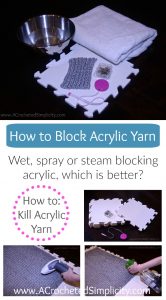
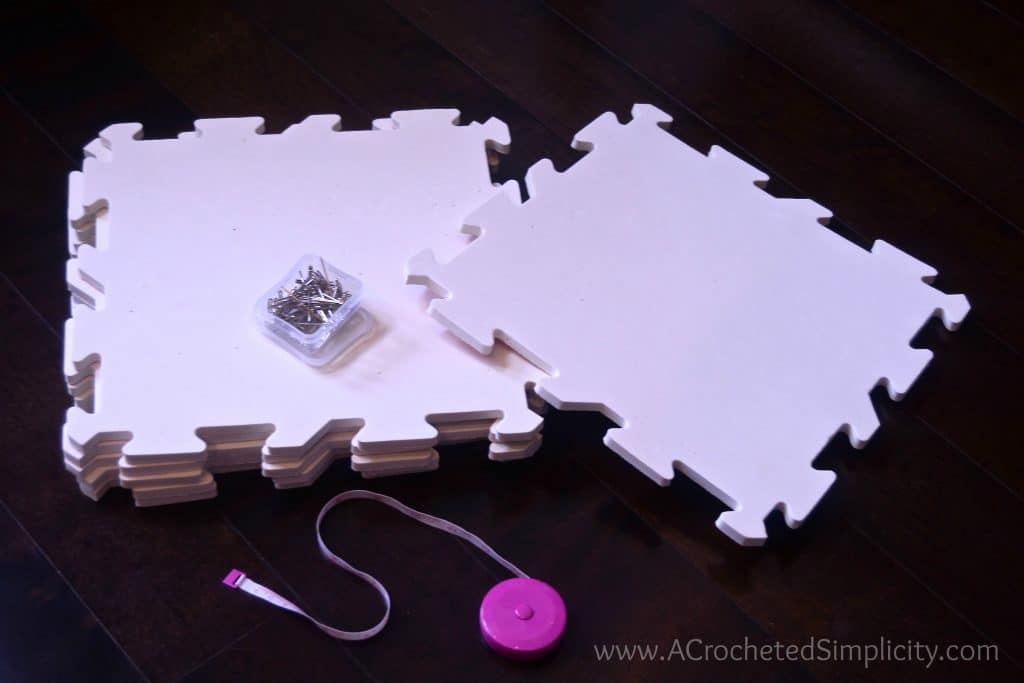
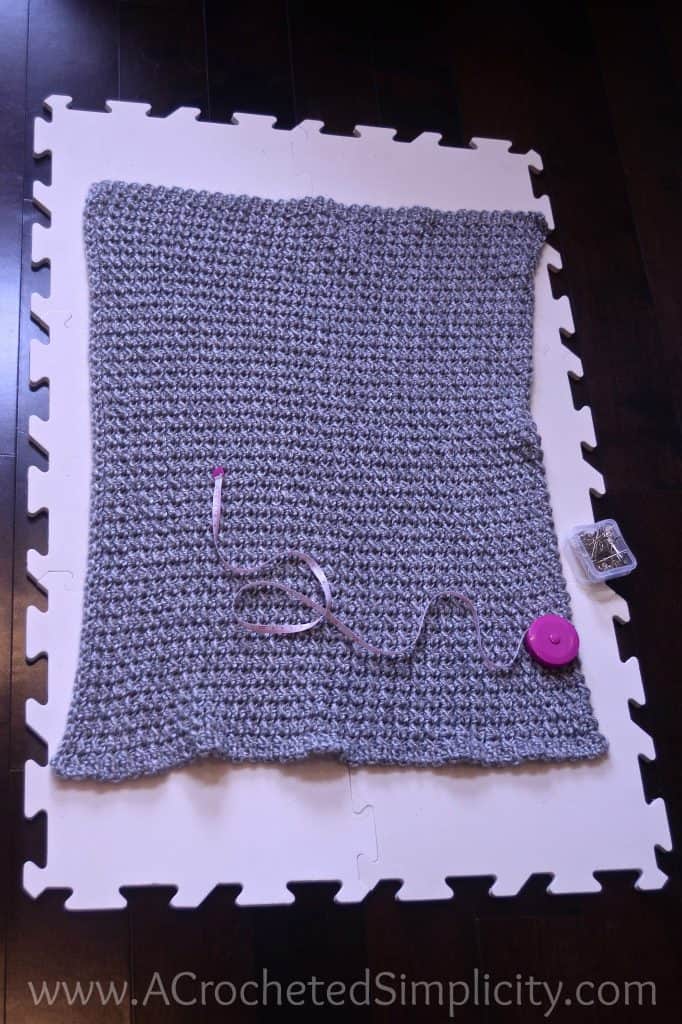
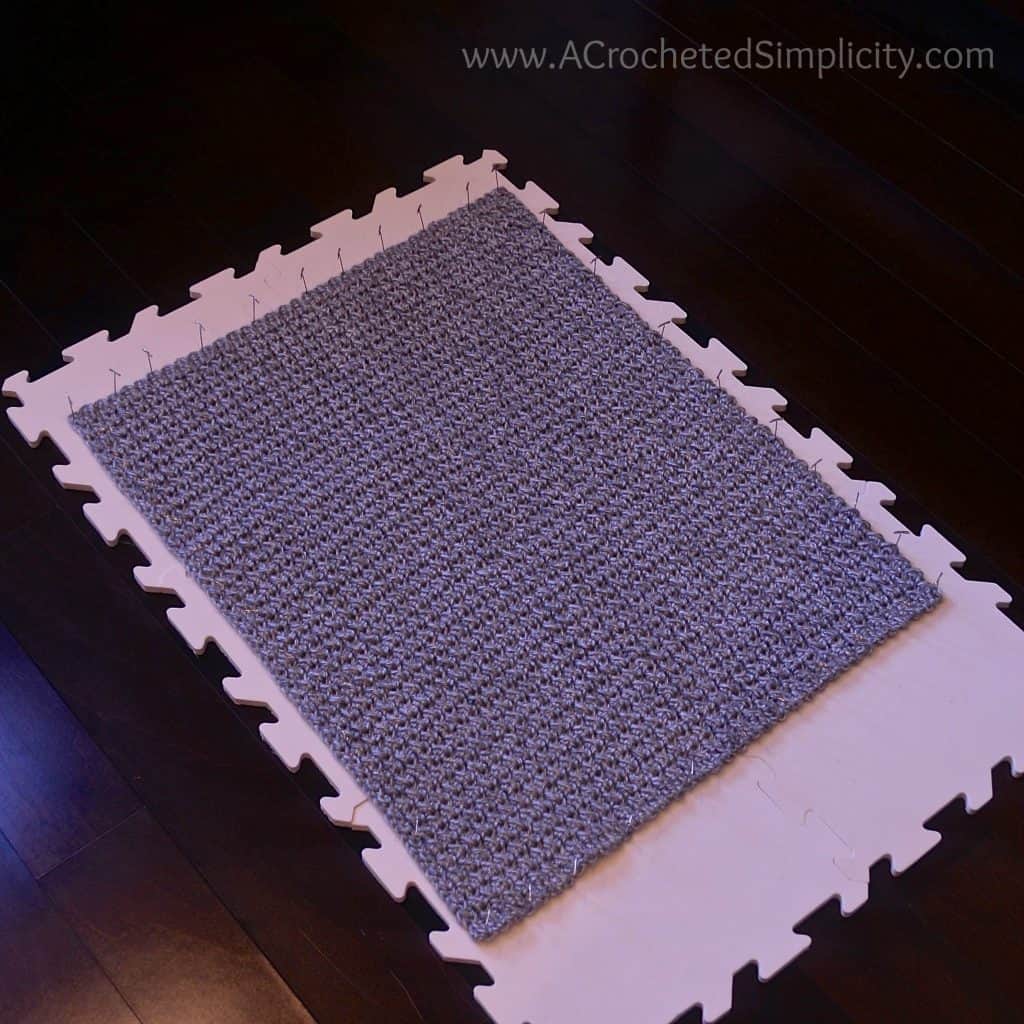
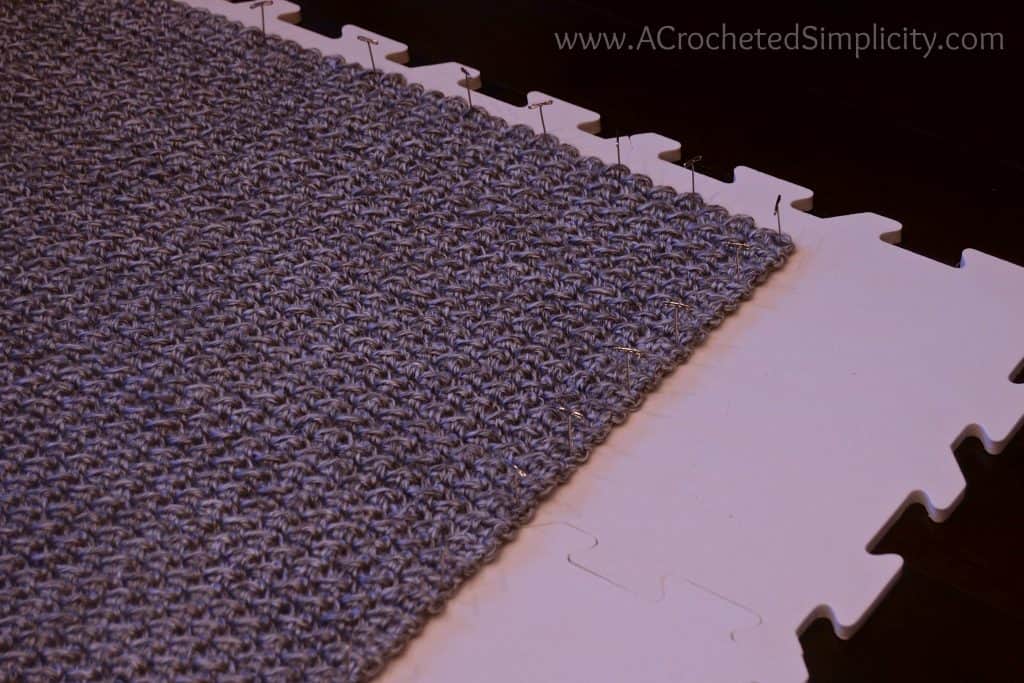
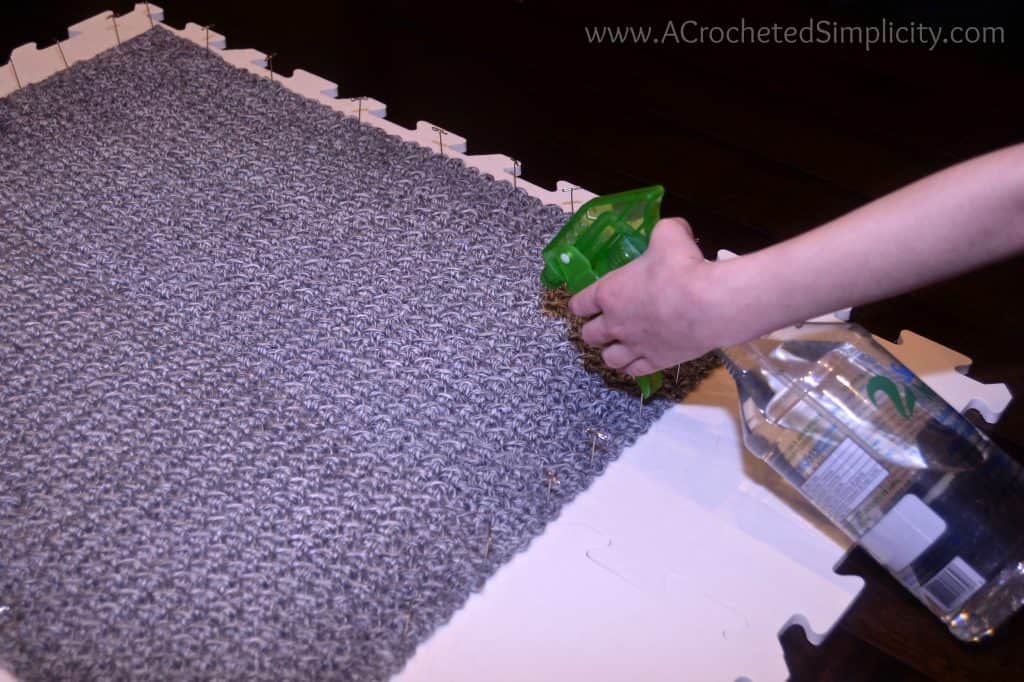
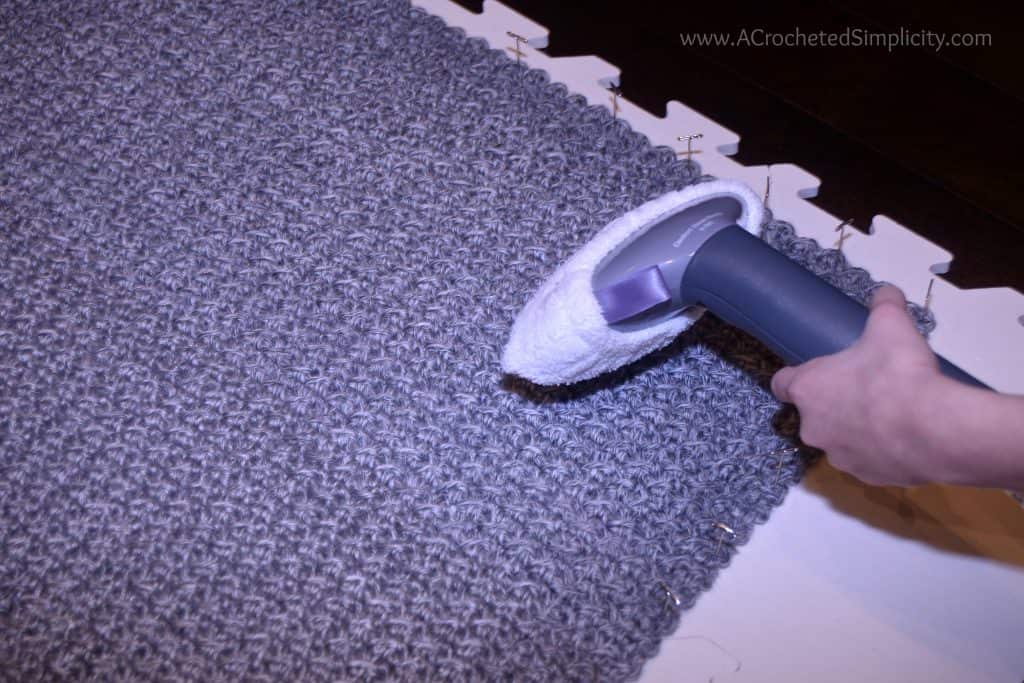
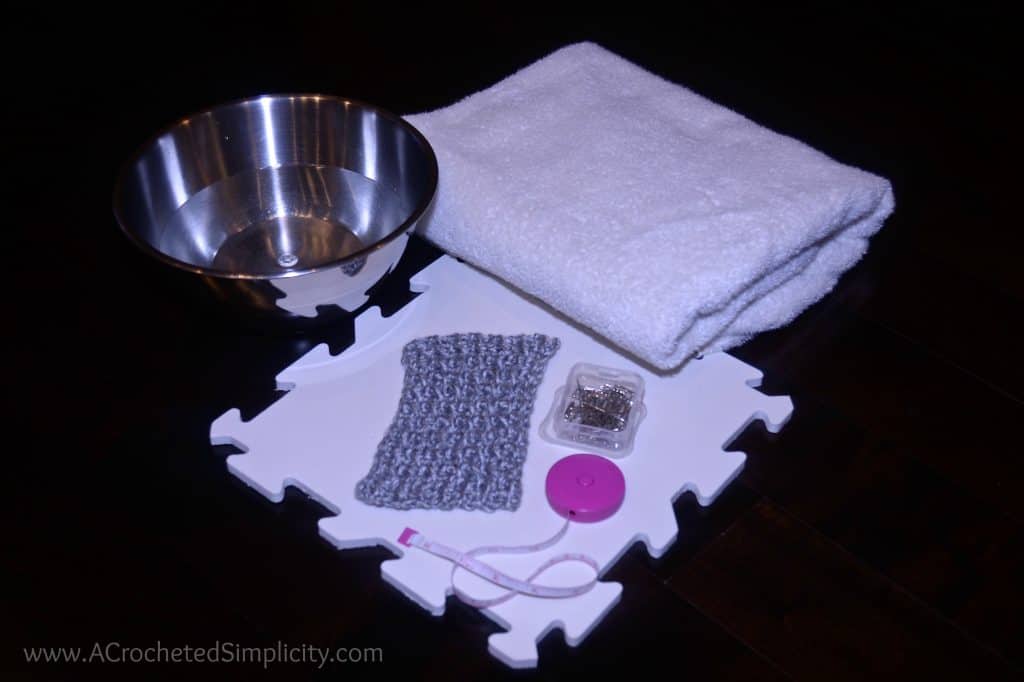
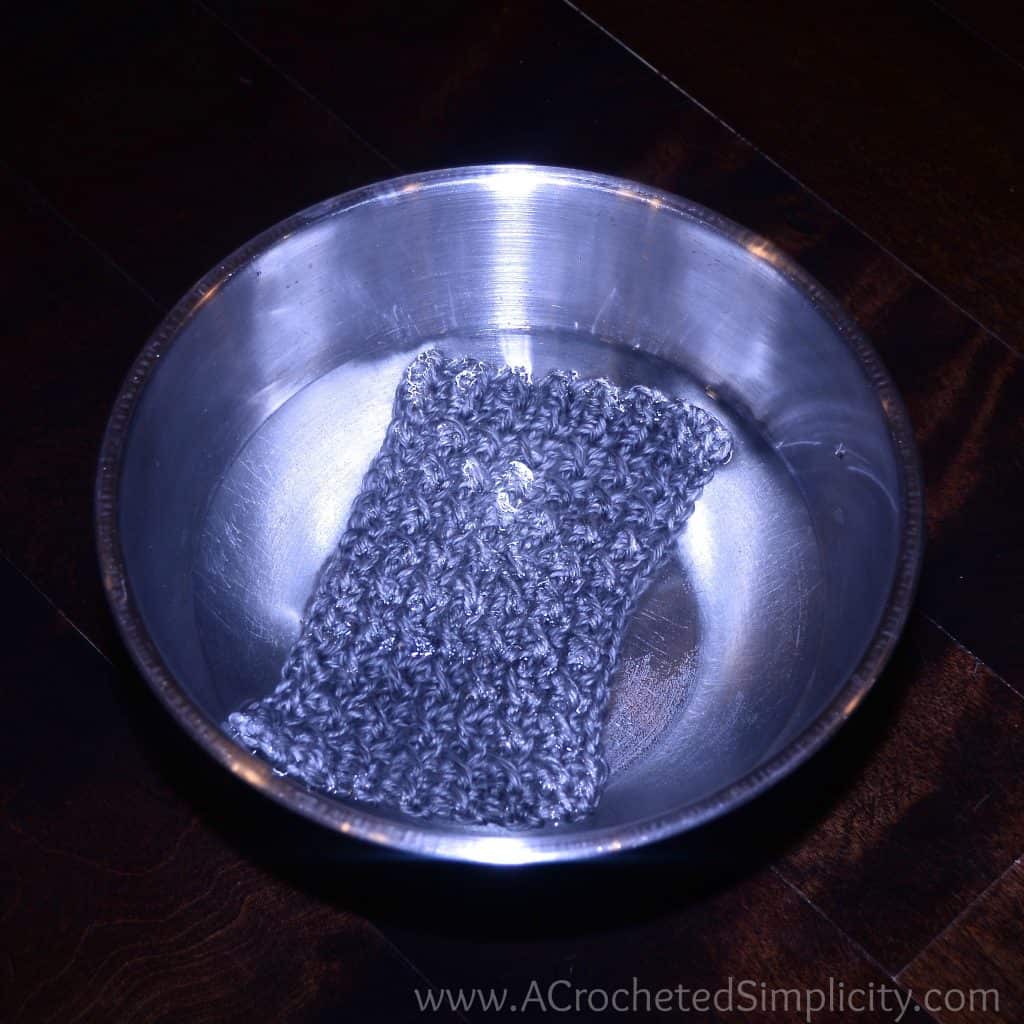
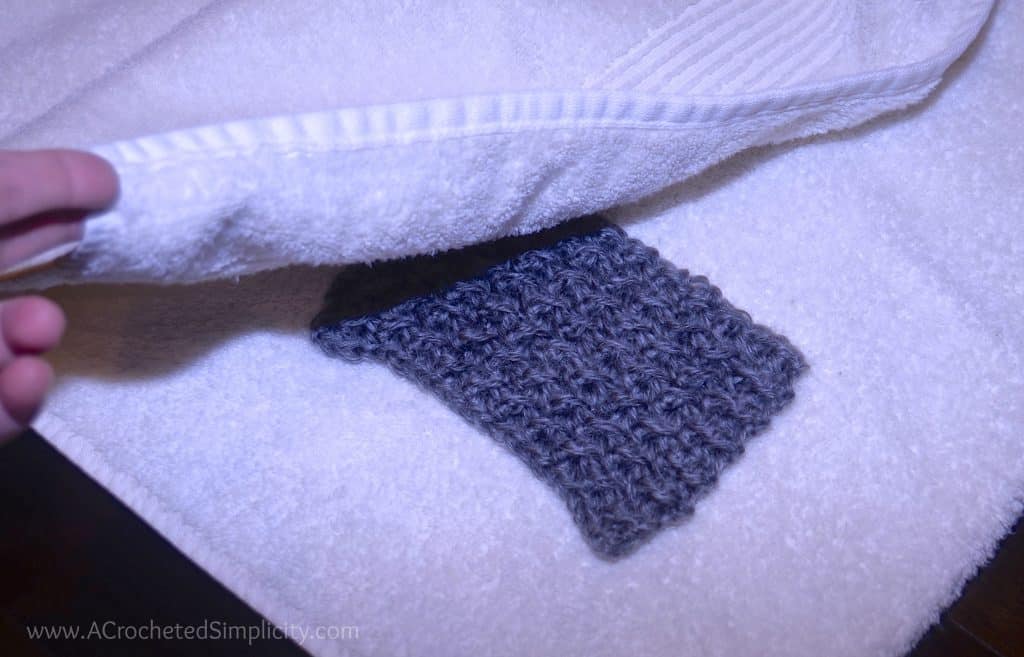
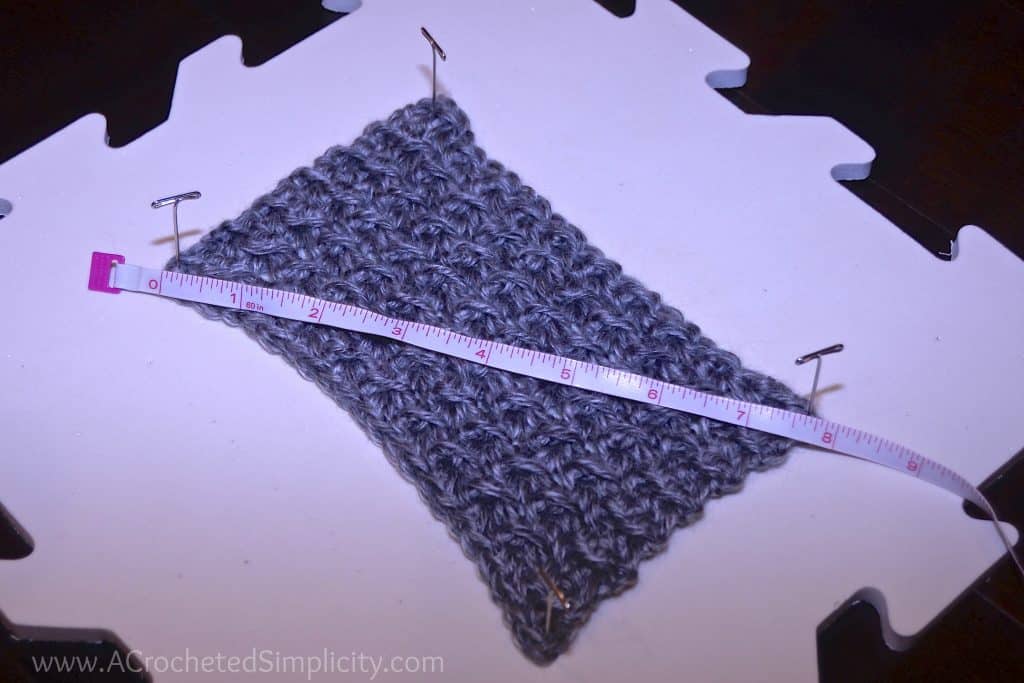
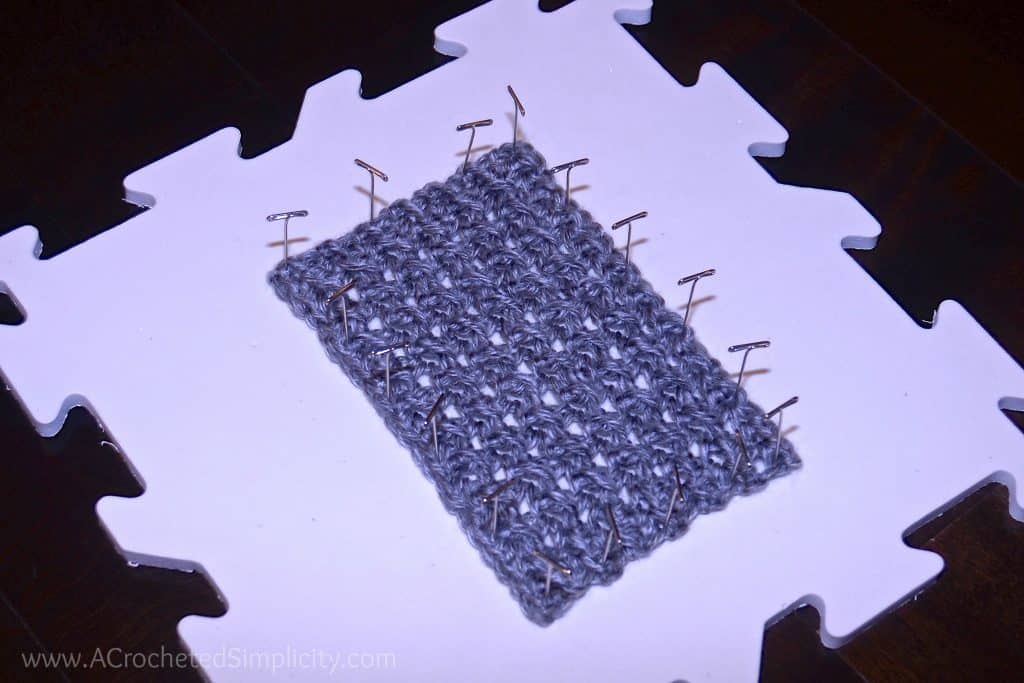


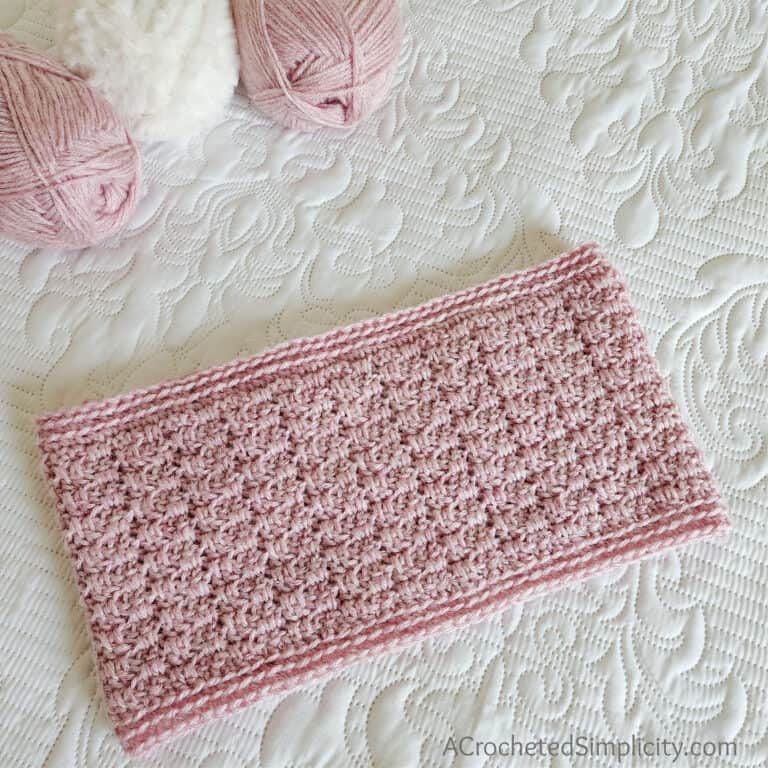

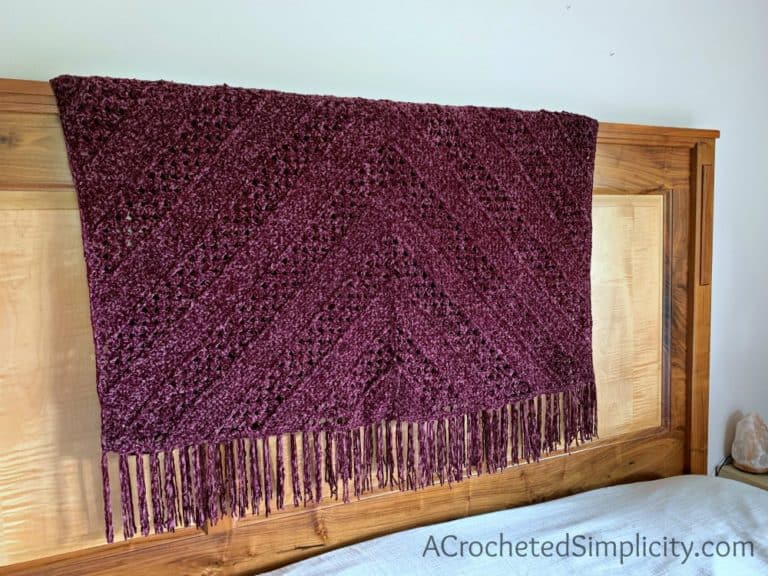

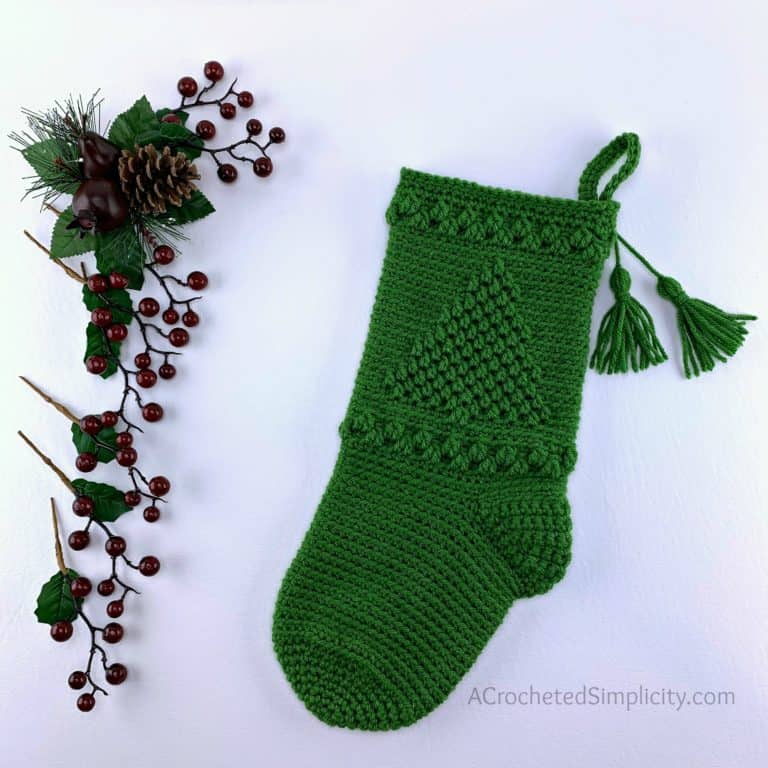

Thanks for the email on blocking. I think that may explain why my sisters sweater I made her – stretched out terribly after she washed it – bet her dryer was too hot and she killed the acrylic. The label says it can be machine washed and dryed, but I am sure at a lower temp than she did. I have never thought about blocking before I sewed the peice together, think I’ll try that next time. I bought a hand steamer and have tried that but I don’t know how long you’re supposed to house it over the fabric and I see you steam after it’s pinned, I tried it before… Gonna try again. thanks
Hi Meri~ I would suggest making a small swatch of the fabric in the pattern and steaming it too see how the yarn steams and to get a feel for how long you need to steam. 🙂
Thank you for this article, cant wait to try this. Im trying the steam blocking 1st
So, if I want an acrylic shawl to loosen up and drape better, could I just throw it in the washer and dryer?
Washing and drying acrylic yarn can loosen up / soften up the stitches and yarn. I’d just make sure not to wash or dry it on hot. 🙂
I just finished my Ohio State afghan. It is made of Vanna`s Choice Lion Brand 100% Acrylic. I want to know if I should steam block BOTH SIDES. Blocking one side, letting it dry and then doing the other side ?? I am using my steam iron. Thanks
Hi Lynn ~ Blocking one side is sufficient. 🙂
I don’t have any t-pns, but I am hoping it will work if I use straight pins? I did a word chart (Rainbow Dolphin) and my tension was so far off at first, then I got tighter as I tried to crochet in the different color tails, Needless to say, it’s wavy! I did a border of shells, but will try to block it to see if that takes care of it. I bought a garment steamer at Walmart. Hope I know when enough steam is enough. I’m using I Love This Yarn.
Nanc
Hi Nancy,
As long as your straight pins are stainless, you can definitely use them. If you have a small swatch of the yarn lying around that you can practice steaming on, I would suggest beginning there. It is really easy to steam and as long as you take it slow, you should be just fine. You can steam a small area and check it. You’ll be able to feel the fabric change as you steam it. It shouldn’t take much to steam the yarn you used. 🙂
Jennifer
The one thing I didn’t ask was, do I just steam the edges or the entire blanket? I did the edges all around it. I had to quit, though. I had cataract surgery on Tuesday and and forgot I wasn’t supposed to bend. I tried keeping my head up and doing it. Now it sits on my floor. I had to use safety pins) as straight pins wouldn’t pull it enough. They are stainless steel. This blanket was so far off I did the best I could.
Now I”m worried that I probably should have done it all. Will do that tomorrow, if it’s not too late.
Nanc
You can steam as much or as little of the project as needed. There have been many projects that I’ve had to steam in sections simply because I didn’t have the space to steam the entire thing at once. Doing so will not be an issue at all.
thanks for the helpful article ~ I’ve never blocked anything I’ve made…
I did a crochet graphed shape with center single crochet ~ I cut the yarn at the end, and started each row on the same side ~ sadly, this created a left slant.
will blocking it let me straighten out the slant?
the shape is a truck, so the vertical lines are supposed to be vertical, not slanted!
Blocking will help, but it may not make it 100% straight. The main reason is because of the anatomy of the stitch… they tend to naturally lean a little to the left.
Hello Jennifer: I just received my blocking squares and blocking pins. I finished a beby blanket that is 100% acrylic. There are 16 squares, knit all at once, no seaming required. If blocking is not permanent, do I need to block at all? I will wash and dry it before giving as a gift. Or should I wash and dry then block? Each square has a bear motif. One square has the bear in garter stitch with the area around the bear in Stockinette. The next square has the bear in stockinette and the area around it in garter stitch alternating squares across the blanket. I want the blanket to lay flatter.
So,if I block then wash and the blocking washes out it seems like a wasted effort. I would appreciate any advice you have for me.
Hi Susan – Blocking acrylic isn’t permanent if you’re just blocking to square things up and make it easier to join all of the squares. But, if you steam block, and you steam just past the blocking stage (before killing the acrylic…only slightly killing it), it will be permanent. I am working on an afghan now and I love how steaming can change the drape of the fabric…plus it softens it up nicely. 🙂
Hi Jennifer
Thanks so much for this post, it’s really handy.
I’m currently making a baby blanket in acrylic which is knit in 4 sections of mitered squares. These are then sewn together before adding a border. I planned to block the sections before sewing together (so I can line up the squares better). having read your blog though im wondering if I want to ‘kill’ my blanket once it’s finished so it’s soft and big or if actually it’s better to retain some elasticity? I guess I will need to block after the border is attached too?
I guess the person will machine wash it to clean so I suppose it’ll die then anyway?
Any advice would be appreciated! 🙂
Hi Kim, I apologize for the delayed response. I was out of state all last week. My response may be too late, but personally I would lightly block the squares to prepare them for seaming and then after you added the border you could steam more heavily to soften it up. My thought is that if you were to kill it before seaming, it may make it harder to manipulate and seam easily. I hope this makes sense. – Jennifer
Great article. I would like to steam block and am looking to purchase a garmet steamer. Any advice or recommendations? Thank you!
Hi Carol – I’ve linked to the steamer I purchased in the very first paragraph about steaming. 🙂 Let me know if you are unable to find it. Jennifer
Blocking is very new to me. I am wondering for an accessory bag and headband I made. So for the accessory bag it has a single crochet border so I should block before I put the border on it after? The same with me headband, block it before I see ends together or after? Thank you !
Hi Kay-Lynn – It sounds like it would be much easier to block the headband before it’s seamed. I would block as closely to the end of the project that you can.
Jennifer
I still haven’t seen you answer the question of blocking completely and then giving it as a gift what will happen when they machine wash and dry it or should you advise them against this
Hi Lilly – I answered that question in an e-mail as I was away from my computer when I received it and it was easier to respond via e-mail. I do that all the time…and then forget to update comments. I’m sorry about that!
As far as machine washing and drying, I would only do this with acrylic yarns. When you machine wash wool, your project will end up felting and shrinking.
It all depends on the fiber content, but generally you will want to re-block a garment after washing just as you would more delicate store bought garments. If it’s an afghan, blocking always adds so much to an item, but it’s not required. If it were a lacey afghan, you would lose a little of the detail when washing if not re-blocking, but it’s not a necessity.
Jennifer
What are your thoughts on blocking ribbing? On a mostly acrylic yarn (10% wool). I’d read not to block ribbing as it will loose it’s elasticity, however acrylic blocking won’t be permanent so…?
Hi Karyn – You are correct. Blocking acrylic will not be permanent (unless you happen to kill it, which then I can see it would lose any elasticity). If you’re making a gift and want it to look nice for the presentation, I’d lightly block up making sure not to stretch it at all. ~Jennifer
Hello
I had a round baby shawl knitted in acrylic that hasn’t been blocked so the shawl doesn’t lay flat. Can I block it still? Or will washer and dryer do the trick? If so what settings do I use for the washer and dryer?
Thank you.
Hi Barb – I’d check the yarn label to make sure, but you should be able to wash and dry on warm if you do not want to block it. Jennifer
I blocked a hat and probably overdid it, it is a little bigger than i want, i did not kill it. Can i undo blocking and try again??
Hi Debbie – It depends onthe fiber content of your yarn.
HI,
I found this article by chance through Google. I have a shawlette that I knitted a while ago in 100% acrylic yarn which I want to gift to a friend who”s just given birth to a baby girl. Hoping that steaming it would create some drape for this shawl that would be nice and soft to the baby’s touch.
Thank you for this article.
You’re welcome!
Can I purposefully “kill” an acrylic sweater to increase the size of it permanently? How would I go about that? Thank you!
Hi Sam,
You can, however, as an acrylic sweater is worn, it will naturally stretch out and I’m afraid that killing it will greatly increase the natural stretch it would have over time.
I would suggest making a swatch in the same yarn and timing how long it takes until the fabric becomes really limp. There is an obvious change in the way it feels after killing it.
I hope this helps.
Jennifer
I’m making a scarf. No fancy stitches just a long rectangle. My problem is the sides aren’t straight. It’s not horrible just comes and goes. If I block it will it go back to not straight when my son wears it? The yarn is Yarnspirations Caron Jumbo. It says machine wash and dry. Will the sides always be wonky?
Hi Vanessa,
You can block and it should stay until it gets wet or washed.
Jennifer
Hello,
Wondering about a yarn that says do not iron. Would that include steaming too? Thanks.
Hi Hannah,
Typically it is still okay to steam, but I have to say it depends on the fibers.
Jennifer
Good article. I am experiencing some of these issues
as well..
Hi Jennifer,
I saw your article about blocking acrylic yarn and I had a question about a sweater that I am making with Red Heart Supper Saver yarn.
In the pattern you have to sew the shoulder seams then knit the neckband around the front and back pieces of the sweater.
My question is should a block the front and back pieces then sew the shoulder seams and then knit the neckband around this?
Or just sew the shoulder seams knit the neckband and then block the two pieces that are now attached to each other on top of each other? I am not sure which would be better….What would you suggest.
Donna
I’m very new to crocheting. I made a baby blanket (crib size) for a friends new grand baby. When I fold it in half the sides don’t line up very well on one side. A friend said it’s because my tension wasn’t consistent. It’s 100% acrylic.
1. Will blocking help with this?
2. If so what happens after they wash it? It’s a baby blanket so I’m assuming it will be washed pretty frequently and they’ll probably want to throw it in the dryer.
3. Should I invest in the foam mats? I plan on making several blankets, but some will be a lot larger.
4. I had to buy 2 different brands of yarn to get the colors I wanted. They are both 100% acrylic but one says it can go in the dryer on low and one says do not put in the dryer. Do you think it’s OK to put it in the dryer?
Thank you in advance!
Hi Jennifer…I am knitting an afghan for my grandson. The pattern is on revelry…”New York Yankees” by Deborah Gardner. I am using Red Heart Super Saver yarn and the finished size is 48×72. It’s a pretty challenging pattern for me (intarsia and fair isle) but it’s coming along nicely. I will probably back it with flannel to hide all the color change stitches, etc. but before I do that, I think I should block it. I am wondering since it’s acrylic, could I wash it in the washing machine to wet it and then block it? I would think that it would be sufficiently wet to block. But before I mess up what is a labor of love, I wanted your expert opinion! Thank you.
Hi Chriss,
Even though you’ve done colorwork, your stitches will still be locked into place. Washing will not harm them, but I always like to err on the side of caution and wash on the delicate cycle. Washing Red Heart Super Saver will also soften it up a lot, which is great! 🙂
Jennifer
Thank you so much for this great description of blocking method a and their pros and cons!